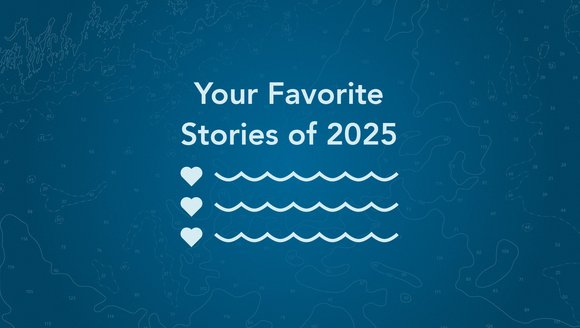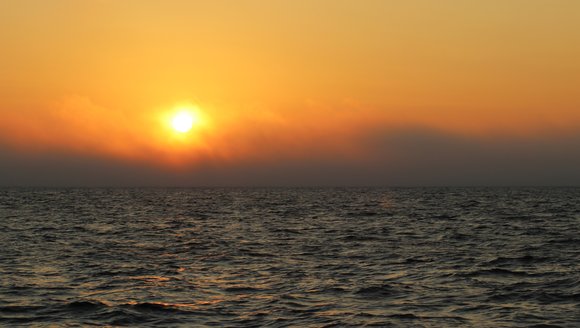Searching for Shrimp: A New Acoustic Study at GMRI
Perspectives | Dec 31, 2015
“…like finding a needle in a haystack.”
It’s the go-to cliché for a difficult search. But marine scientists might challenge a frustrated straw-sifter to try looking for tiny marine species in a great big ocean.
Some of the most important creatures in the Gulf of Maine are also among the smallest. Species such as herring and northern shrimp are near the bottom of the food chain, but are vital to a healthy ecosystem and fishing economy. To learn more about herring, our scientists and fishermen partners have practiced and perfected a method of recording fish activity by using acoustic technology. This methodology is a crucial part of our herring research.
Now, the team is taking on a bigger (yet smaller) challenge. Northern shrimp have long been an important species in the Gulf of Maine — both ecologically and economically. Shrimp spawn in deep water in the summer. In the winter, they move inshore to lay their eggs. This is when the harvest typically takes place. In the past, this timing allowed lobstermen and others to fish for shrimp as a complementary source of off-season income.
But there have been severe restrictions on the northern shrimp fishery in the Gulf of Maine since 2011, with a complete moratorium in 2014 and 2015. In November 2015, the Atlantic States Marine Fisheries Commission (ASMFC) announced an extension of the moratorium for 2016.
Now, our researchers and fishermen partners hope the acoustic technology that has been so helpful investigating herring will again prove useful as we seek answers for the shrimp fishery. With the help of our partners, we are now applying this methodology throughout the Gulf of Maine to examine a possible shift in shrimp distribution.
Previously, landings data from commercial fishermen revealed patterns in the fishery. But with limited fishing effort in the last five years, and no information from the last two years, scientists lack the information they need to assess the fishery. This multi-year study aims to fill this gap by tracking shrimp abundance and distribution over time.
We’ve equipped the boats of our fishermen partners with acoustic instruments called transducers. The fishermen travel back and forth in consistent patterns called transects, shooting sound waves from the transducers to the ocean floor. As the sound waves bounce back, their characteristics reveal the presence of creatures swimming below.
One challenge of acoustic shrimp surveys is what researchers refer to as “ground-truthing,” or verifying what you think you see in the acoustic data. To do that, survey vessels deploy traps and trawl nets to check for the presence of shrimp. These small samples help verify the identity of the species according to their acoustic characteristics.
Scientists cite increasing water temperatures as one reason for the decline of northern shrimp. Like cod, northern shrimp are a cold water species, with the Gulf of Maine representing the edge of their range. A warming Gulf of Maine makes it harder for shrimp to survive, so researchers suspect they may be seeking colder waters. As we learn more about this key species, our researchers hope to provide information that will help us understand the ecosystem and guide fishery managers through future decision making.



